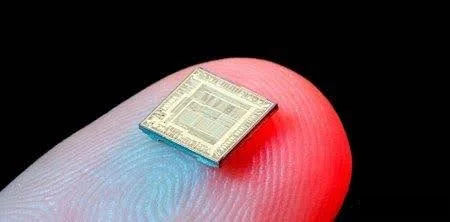In modern electronics, terms like semiconductors, integrated circuits (ICs), and chips are frequently used, often leading to confusion about their precise meanings. While these concepts are closely related, they represent distinct stages in the creation of electronic devices. Understanding their differences is essential for grasping how today’s technology, from smartphones to supercomputers, functions at a fundamental level.
In modern electronics, terms like semiconductors, integrated circuits (ICs), and chips are frequently used, often leading to confusion about their precise meanings. While these concepts are closely related, they represent distinct stages in the creation of electronic devices. Understanding their differences is essential for grasping how today’s technology, from smartphones to supercomputers, functions at a fundamental level.
You might also like: A fresh take that complements what you just read.
What are Semiconductors
At the most basic level, a semiconductor is a material that exhibits electrical conductivity between that of a conductor, such as copper, and an insulator, such as glass. This unique property allows semiconductors to be precisely controlled, making them indispensable in electronics. The most commonly used semiconductor material is silicon, though others like gallium arsenide (GaAs) and germanium (Ge) are also employed for specialized applications.
Semiconductors serve as the foundational material for all electronic components. Through processes like doping, introducing impurities to alter electrical properties, semiconductors can be engineered to create devices such as transistors, diodes, and resistors. These components form the building blocks of more complex electronic systems.
To draw an analogy, think of semiconductors as the wood pulp required for papermaking. Just as wood fibers in their raw state don’t possess writing functionality and need special processing to become the foundational material for paper, pure silicon must undergo manufacturing and refinement before it can be transformed into useful electronic components.
What are Integrated Circuits (ICs)
An integrated circuit (IC) represents the next stage in the journey from raw material to functional device. ICs are miniature electronic circuits fabricated onto a single semiconductor substrate, typically a thin slice of silicon known as a wafer. These circuits integrate thousands, millions, or even billions of transistors alongside other components like resistors and capacitors, all interconnected to perform specific functions.
The invention of the IC in the late 1950s revolutionized electronics by enabling the miniaturization of complex circuits. Before ICs, electronic devices relied on discrete components wired together, which was bulky, inefficient, and prone to failure. Today, ICs are the heart of virtually all electronic systems, from microprocessors in computers to memory chips in smartphones.
Extending this comparison, if semiconductors represent wood fibers, then integrated circuits are like carefully manufactured paper sheets. Much like different types of paper serve distinct purposes – for writing, printing, or packaging – integrated circuits similarly come in various forms such as memory chips, processors, and sensors.
What are Chips
The term chip refers to the packaged form of an IC, ready for integration into electronic devices. After fabrication, the wafer is cut into individual dies, each containing a complete IC. These dies are then encapsulated in protective materials, often with metal pins or solder balls to facilitate connections to circuit boards.
Chips come in various forms, ranging from the simple to the extraordinarily complex, like a voltage regulator in a power supply to a modern system-on-a-chip that combines a CPU, GPU, and memory. The black rectangular components seen on computer motherboards or inside smartphones are examples of packaged chips.
Returning to our analogy, while individual sheets of paper are useful on their own, they realize their full potential only when bound together as books. In the same way, chips represent the final packaged form of integrated circuits, analogous to binding paper into books. This packaging not only protects the delicate integrated circuits inside but also provides external connection interfaces.
Clarifying the Hierarchy
To summarize the relationships: Semiconductors are the raw materials used to create integrated circuits, which are then packaged into chips for practical use. This hierarchy underpins the entire electronics industry, from the simplest gadgets to the most sophisticated artificial intelligence systems.
In essence, semiconductors form the foundation, integrated circuits are the engineered systems built upon that foundation, and chips are the tangible products that bring these technologies into our daily lives. Together, they represent the invisible backbone of the digital age, enabling the devices and innovations that define modern civilization.
Curious hearts and bright minds—follow the path to more wisdom on 2A Magazine.







